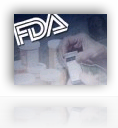I have created quite a few posts on the FDA relative to the same and similar subjects, mainly lack of technology for so long from my corner of the world being this is what I do. Key statement here relates to “30 years ago” which would indicate we were operating out of the70s, but I think it goes a little further back than that, and we had members of Congress that felt uncomfortable about talking about technology. If the plants were not inspected, where was the technology to send alerts to let officials know they needed it? Alerts with software can help us to all of this today, so without the software, things either accidentally or by no planning get neglected, so now we finally have some “Business Intelligence” software being installed to come to the rescue.
From October 2007: Chemicals Flow Unchecked From China to US Drug Market
It wasn’t until May of this year that the FDA finally asked for more money with some members of Congress upset over the fact that they had not asked for more money. The story from Pharmalot has the link to entire essay.  Top officials at the agency perhaps until recently didn’t even have computers and were writing studies in longhand! I had even made a couple remarks about getting some inexpensive Classmate computers out to the staff if money was the issue so reporting could be timely instead of the long paper processes that cost everyone time and efficiency.
Top officials at the agency perhaps until recently didn’t even have computers and were writing studies in longhand! I had even made a couple remarks about getting some inexpensive Classmate computers out to the staff if money was the issue so reporting could be timely instead of the long paper processes that cost everyone time and efficiency.
They are not the only government agency coming out of the dark ages as there are others playing catch up as well, but the FDA is right up there at the top as their decision on the medications and foods we consume are critical as they are the government watch dog in charge of keeping our consumables safe. BD
In an essay that takes a top-down view of the agency and its myriad problems protecting the supply of pharmaceuticals, Gardiner Harris of The New York Times reviews the highlights - or lowlights - of the past year or so: the Heparin deaths, the Ranbaxy scandal and the withering criticism from Congress.
And he notes some of the issues bedeviling the FDA as it struggles to cope with the growing role played by Chinese suppliers: antiquated FDA computer systems, an inability among FDA staff to decipher names of Chinese plants, difficult travel conditions for agency inspectors, and, of course, the debate over sufficient FDA funding. For instance, this year, 18.2 million shipments of food, devices, cosmetics and drugs are expected to enter more than 300 US ports, but the FDA had 454 investigators in 2007 - one and a half per port to scrutinize them.
This was not much of a problem 30 years ago, when most medical products consumed in the US were made here and FDA inspectors could drive around to plants in their district. Most of those plants have since moved abroad, and now decades can pass between inspections.
Related Reading:



0 comments :
Post a Comment